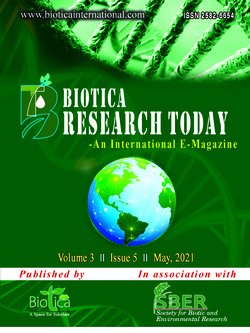
Impact of Biofloc Systems on Nutrient Use and Wastewater Management
Kaliyamurthi Venkatachalam*
Dept. of Basic Sciences (Biochemistry), Institute of Fisheries Post Graduate Studies, Tamil Nadu Dr. J. Jayalalithaa Fisheries University, OMR Campus, Vaniyanchavadi, Chennai, Tamil Nadu (603 103), India
Ambika Binesh
Dept. of Basic Sciences (Biotechnology), Institute of Fisheries Post Graduate Studies, Tamil Nadu Dr. J. Jayalalithaa Fisheries University, OMR Campus, Vaniyanchavadi, Chennai, Tamil Nadu (603 103), India
DOI: NIL
Keywords: Biofloc systems, Integrated system, Nutrient Utilisation, Wastewater management
Abstract
The application of Biofloc technology (BFT) provides advantages in the improvement of aquaculture production that could lead to the achievement of the objectives of sustainable growth. With less environmental impact, this technology may result in higher productivity. In addition, biofloc systems can be built and implemented in conjunction with other food production methods, thus encouraging efficient integrated systems aimed at generating more food and feed from the same land area with less input. In order to optimize the system (in relation to operational parameters), still more research is needed, e.g., in relation to nutrient recycling. Furthermore, research findings would need to be communicated to farmers as upgrading of their skills will be needed to incorporate biofloc technology.
Downloads
not found
Reference
Food and Agriculture Organization, 2017. FAO and the SDGs. Indicators: Measuring up to the 2030 Agenda for Sustainable Development. Rome: FAO, p. 39. http://www.fao.org/3/a-i6919e.pdf.
Ekasari, J., Azhar, M.H., Surawidjaja, E.H., Nuryati, S., DeSchryver, P., and Bossier, P., 2014. Immune response and disease resistance of shrimp fed biofloc grown on different carbon sources. Fish Shellfish Immunol 41, 332–339.
Luo, G., Gao, Q., Wang, C., Liu, W., Sun, D., Li, L., Tan, H., 2014. Growth, digestive activity, welfare, and partial cost effectiveness of genetically improved farmed tilapia (Oreochromisniloticus) cultured in a recirculating aquaculture system and an indoor biofloc system. Aquaculture 422, 1–7.
